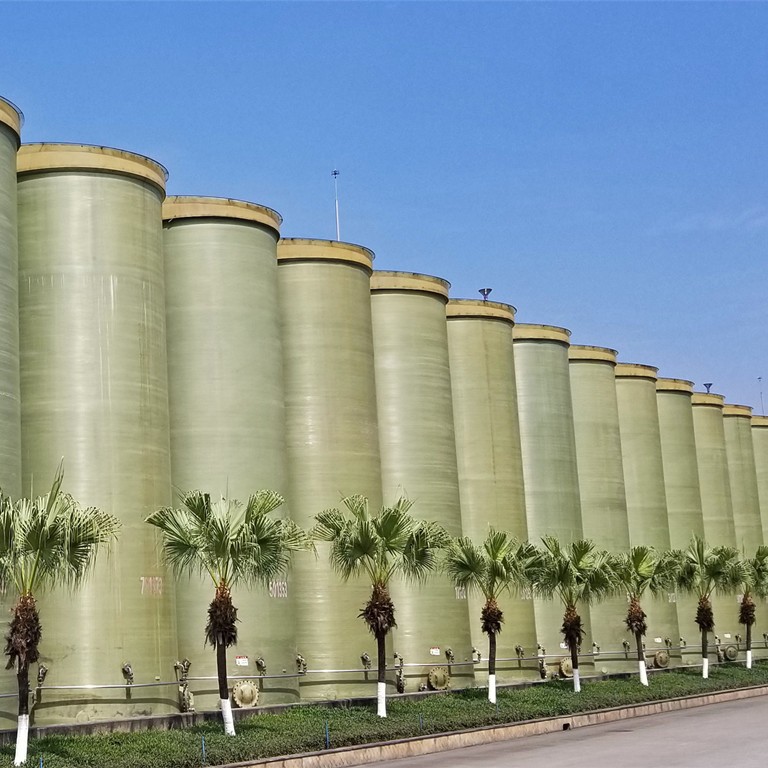frp chimney construction and installation for industrial and
FRP Chimney Construction and Installation for Industrial Applications
In recent years, the use of Fiber Reinforced Polymer (FRP) materials has revolutionized various industries, including construction, due to their exceptional strength-to-weight ratio, corrosion resistance, and longevity. Among the applications of FRP, the construction and installation of chimneys for industrial facilities stand out as a critical area where these benefits can be fully realized.
FRP chimneys are particularly advantageous in environments where traditional materials, such as steel or concrete, may deteriorate due to chemical exposure, moisture, or extreme temperatures. The corrosive nature of emissions from industrial processes can significantly shorten the lifespan of conventional chimneys, leading to expensive maintenance and replacement costs. In contrast, FRP chimneys are engineered to withstand harsh environments, thus offering a durable solution that minimizes downtime and operational disruptions.
Construction of FRP Chimneys
The construction of FRP chimneys involves a meticulous process that starts with the selection of high-quality raw materials. The fibers, often glass or carbon, are combined with a polymer resin, creating a composite material that boasts enhanced structural properties. This composite is then molded into specific shapes to form chimney sections that can be easily transported and assembled on-site.
One of the key advantages of FRP is its lightweight nature. Unlike traditional materials, which can require extensive heavy-duty lifting equipment for installation, FRP components can often be handled by smaller machinery. This not only reduces equipment costs but also simplifies the logistics of transporting materials to construction sites, particularly in remote locations.
Installation Process
frp chimney construction and installation for industrial and

The installation of FRP chimneys typically begins with a thorough assessment of the site and the existing infrastructure. Careful planning is essential to ensure that the chimney integrates seamlessly with existing systems and complies with local regulations. The chimney's design may also include features such as access doors and monitoring equipment for performance assessment and maintenance purposes.
Once the foundation is prepared, the assembled FRP sections are lifted into place and secured. The joints between the sections are critical to the overall integrity of the chimney, and these joints must be expertly sealed to prevent leaks and ensure structural stability. After installation, the chimney undergoes a series of inspections and tests to verify its performance, including assessments of wind load resistance and vibration effects.
Benefits of FRP Chimneys
The benefits of FRP chimneys extend beyond just durability. They require minimal maintenance compared to their traditional counterparts, significantly reducing long-term operational costs. Their smooth surfaces also facilitate better flow of exhaust gases, enhancing efficiency and reducing the potential for buildup that might cause blockages.
Additionally, FRP chimneys can be designed for specific aesthetic requirements, allowing them to blend into various architectural styles. This versatility makes them suitable for a diverse range of industrial applications, from power plants and manufacturing facilities to chemical processing plants.
Conclusion
In summary, the construction and installation of FRP chimneys represent a forward-thinking approach for industries facing the challenges of corrosion and high maintenance costs. By leveraging the unique properties of FRP materials, companies can not only ensure the durability of their chimney systems but also enhance operational efficiency, ultimately leading to significant cost savings and improved environmental compliance. As industries continue to evolve, FRP will likely play an increasingly vital role in sustainable construction practices.
Latest news
-
Oblate Tanks: Space-Saving, Durable Liquid Storage SolutionsNewsAug.27,2025
-
High-Performance Piping System Solutions for Industry & Commercial UseNewsAug.26,2025
-
Precision Fittings: Durable & Reliable Industrial & Plumbing SolutionsNewsAug.25,2025
-
Practical Steps: Unlock Success with Our Proven GuidesNewsAug.24,2025
-
Transport Tanks: Safe, Durable & Efficient Liquid HaulingNewsAug.23,2025
-
High-Quality Piping Systems for Efficient Flow & DurabilityNewsAug.22,2025











